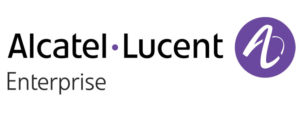CPaaS opens up a world of possibilities for organisations (particularly contact centres) to interact with customers on a range of platforms like voice, video, chat, social, etc. without having to build expensive back-end infrastructure. In the last few years, CPaaS has seen meteoric growth, with 81% of companies already deploying some kind of CPaaS by 2017.
For more stats on CPaaS adoption, check out our 2020 CPaaS statistics and facts roundup. You could also view UC Today’s CPaaS explainer video by Rob Scott here.
Now, in the wake of the COVID-19 pandemic, CPaaS has important implications for companies looking to engage with audiences through digital platforms and grow their footprint using advanced communication APIs. It would allow contact centres to build bespoke applications and tightly coupled integrations without getting into back-end complexities or requiring a messy infrastructure overhaul.
To understand where the CPaaS industry is headed in 2021, we spoke to industry experts from Kandy, Sinch, and Alcatel-Lucent Enterprise.
What Were the Top CPaaS Trends that Shaped 2020?
Back in 2019, we noted a dramatic growth in the CPaaS sector, already motivated by remote working. For 2020, our experts had predicted the rise of IoT and AI as key driving forces for the sector. This time, we asked the same question – expectedly, it was COVID-19-related WFH that had the strongest impact.
Predictions around IoT also saw fruition, in addition to a keen focus on data, and communications security. Here is what our experts had to say.

Kim Jones, Director of Marketing at Kandy Communications, discussed the many ways in which CPaaS reacted to the pandemic, witnessing faster adoption, the abandoning of transactional APIs/SDKs, and a lot of interest around browser-based communication.
“WFH drove demand for video conferencing and collaboration platform solutions for remote workers,” said Jones, causing an “acceleration of digital transformation initiatives and adoption of RTC such as UCaaS, CCaaS and CPaaS.”
She highlighted four standout trends from 2020:
- Contact centre enablers – Demand for contact centre as a service and lightweight web-based contact centre solutions that enable easy spin-up as standalone solutions or to complement existing call centres, and/or for remote agents working from home
- Healthcare use cases – Telehealth concierge applications with embedded real-time communications, and especially with peer-to-peer video – driven by caregiver-patient interactions under lockdowns or quarantine during the pandemic
- New ways to integrate – Transition from the traditional view of a transactional API and SDK model to more of a multi-service digital marketplace model, including pre-built turnkey applications and connectivity services, such as MS Teams, Direct Routing, STaaS, etc.
- Web-based access – WebRTC applications such as Live Support that enable browser-based omnichannel communications for the digital transformation of business processes and customer experience
The focus was on greater flexibility aided by CPaaS technologies.
Jonathan Bean, CMO, Sinch , agreed on the unprecedented impact of the pandemic, noting that it propelled several organisations to turn to CPaaS as a speedy value generator. This was particularly true for sectors and organisations that put off digitalising their customer communications channels for decades – like banks or financial services providers.
, agreed on the unprecedented impact of the pandemic, noting that it propelled several organisations to turn to CPaaS as a speedy value generator. This was particularly true for sectors and organisations that put off digitalising their customer communications channels for decades – like banks or financial services providers.
“Till 2019, most financial institutions were only using mobile messaging for one-time passwords or verification of their users. Suddenly, they had to actually communicate with their customers about things like changes to their loan terms through SMS!” Bean mentioned, highlighting a small instance that signals a much larger tectonic shift.
2020 was spent playing catch-up for several such organisations. “Because of this, we’ve worked with many financial organisations last year to help them quickly implement simple CPaaS solutions in response to the pandemic,” said Bean.
Interestingly, the shift wasn’t just to overcome the operational hurdles of communicating in a low touch or touchless landscape. Customer demand has also changed, and without CPaaS, it may not be possible to generate the same ROI from communication investments.
“Last year we saw the pandemic completely transform consumer behaviour forever. As a result, businesses and organisations had to quickly figure out how to get closer to their employees and customers in this new reality,” Bean said.
“For many businesses and organisations, this meant having to implement changes they were planning on making in five years but in the space of just five months. Therefore, like all good technology shifts, the deployment of simple CPaaS solutions offering quick ROI and simplicity for businesses and consumers was the biggest trend in 2020.”
 Noel Pierre-Yves, Strategic Marketing Director for Cloud services, Alcatel-Lucent Enterprise, told us the trends his company observed in 2020 and its tactical response by creating a “Connector’s Factory.”
Noel Pierre-Yves, Strategic Marketing Director for Cloud services, Alcatel-Lucent Enterprise, told us the trends his company observed in 2020 and its tactical response by creating a “Connector’s Factory.”
“As Enterprises were trying to cope with the sanitary crisis by facilitating “work from anywhere”, programmable communications and CPaaS have helped enterprises communicate in a more efficient way,” commented Pierre-Yves.
And it isn’t just about replicating the same communication dynamics in a different location. Pierre-Yves argues that by embedding comms into software that people use every day, it is possible to receive the right information at the right moment with the right (read the least) amount of effort.
“In that sense, Alcatel-Lucent Enterprise has created a Connectors Factory so that communications can reach and be used in mainstream software solutions. We also see enterprises eager to see business, IoT and infrastructure delivered directly to people through their favourite communication application in real-time, allowing employees and customers to make better decisions. This convergence of data into the workplace allows the enterprise to simplify work for employees while creating value for their customers and partners,” said Pierre-Yves.
This transformation of bare-bones or functional communication into data-enriched messages has two implications according to Pierre-Yves.
First, there are opportunities to automate internal and external workflows, taking off from the data that is shared. Second, security is a major concern: “As communication includes more business data on top of typical text, voice and video communications, security becomes an even more relevant topic to communication APIs.” Pierre-Yves shared with us how Alcatel-Lucent Enterprise is planning to preempt security concerns going into 2021.
“Alcatel-Lucent Enterprise values data security for their customers and is one of the main European platforms in the CPaaS market. We are investing in security around data to ensure data sovereignty for our customers, specifically in European countries”
Which New Technologies are Creating the Biggest Opportunities?
CPaaS is in a unique position, in that it is a relatively mature market, having been around for several years. However, the pandemic has given it a leg-up that could push growth well beyond any other UC sector average. From $4.54 billion in 2020, CPaaS will be worth $26.03 billion by 2026 at a CAGR of 34.3%. We asked our experts about the technologies creating this incredible opportunity for growth. The answers ranged from ecosystem solutions powered by the cloud to targeted APIs for e-commerce, IT provisioning, omnichannel, etc.
Interestingly, one expert zeroed in on blockchain as the most game-changing technology-enabler for CPaaS on the road ahead. Read on for the full insights.
For Kim Jones, the following technologies should be on CPaaS leaders’ and users’ radar:
- WebRTC
- Video (P2P and multiparty)
- Artificial Intelligence (AI)
- UCaaS in the cloud
- Ecosystem of real-time comms
Speaking on WebRTC, Jones said, “WebRTC is now mainstream in all major web browsers, and is frictionless/plugin-less in order to enable ubiquitous use.” WebRTC could be instrumental in extending traditional UCaaS capabilities into specific applications and business processes including contact centre apps, she added.
In addition to blockchain, AI was the other emerging technology that could unlock opportunities for CPaaS. Jones mentioned that AI-enabled services could make a genuine difference in chatbots, and interactive voice response (IVR), reducing manual dependencies to a large extent. All of this will aid in the creation of a communication ecosystem powered by APIs for voice, video, messaging, chat, rich chat, etc., along with non-comms APIs for security, e-commerce, billing, provisioning, and configuration.
Finally, like several industry leaders we’ve spoken to in the last few months, Jones mentioned the potential of Microsoft Teams in the CPaaS arena – “MS Teams and DR/DRaaS for Teams could enable dial time access to the PSTN without using Microsoft calling plans.”

Jonathan Bean
Jonathan Bean from Sinch opined that the next few months in CPaaS will be spent in responding to the challenges and opportunities caused by the pandemic, with particular attention on the regional rules of engagement. “The pandemic turned the march towards digital transformation into a stampede and the biggest opportunities were enabled by those technologies which really helped to fast-track the deployment of simple CPaaS use cases,” Bean said.
Instead of blindly expanding one’s digital footprint, companies should remember the unique modalities of different geographies to capitalise on this opportunity.
“The pandemic has been a truly global event, with every single country affected to some extent, impacting billions of people worldwide. This has pushed the messaging layer of CPaaS to the fore as businesses and organisations try to engage with employees and customers at scale”
“As a leader in mobile customer engagement, we know that different countries prefer different channels and each has its own rules of engagement,” Bean observed.
To understand and master each of these channels like WhatsApp, Facebook Messenger, Viber and Line across multiple countries takes huge amounts of time.”
Sinch is doing its part with the recent launch of its conversational API, which is a singular integration for omnichannel interactions. Bean calls it the “new gateway through which organisations can reach customers across the world via multiple messaging channels,” effectively gaining from the opportunities of this reimagined customer engagement landscape.
“This is why 2020 has been a real coming of age for CPaaS,” he added.
Noel Pierre-Yves from Alcatel-Lucent Enterprises mentioned data analytics and blockchain as the two most game-changing technologies for CPaaS right now. As he already mentioned, functional communication is becoming increasingly data-enriched, adding more value to everyday communications relayed to both employees and customers.
As a result, there are opportunities to be unlocked by tracking data response and interpreting employee/customer behaviour in the same vein.
“As enterprises start sharing more data between their employees, customers and providers, value creation comes from data analytics through AI and machine learning. It is possible to understand people’s intent using data trends and estimate how they affect the company. By analysing data content, companies can also better understand how it can help employees to do their jobs,” Pierre-Yves explained.
The two implications of data-enriched comms as mentioned by Pierre-Yves were automation and security – both of which make this a prime candidate for blockchain implementation.
“As enterprises automate their internal business processes with real-time comms, they will see immense benefits in automating business processes internally and with people from other companies. While doing so, securing data exchanges with blockchain will become a must,” said Pierre-Yves. Blockchain could potentially replace third-party audits adopted to secure data exchange. Thanks to blockchain, enterprises could find the confidence that they need to fully tap into the potential of data exchange through CPaaS reassured that their internal and external communications lines are secured by blockchain smart contracts.
“Blockchain gives companies greater control over the usage made of their data, encouraging them to allow more real-time exchanges. This leads to the creation of more value with external companies,” he added.
What are the Top CPaaS Trends Awaiting us in 2021?
As the CPaaS industry continues the growth momentum set by last year, we could expect a number of important trends. CPaaS is by no means a young or nascent market, but new opportunities are emerging every day, powered by sophisticated APIs, and industry-wide thrust into the cloud, and growing demand for embedded communication among customers.
If 2020 marked the coming of age of CPaaS, 2021 is when it really matures, finding as much as 90% later stage adoption in the next two years.
When asked about 2021’s top CPaaS trends, Kim Jones from Kandy mentioned a move towards the ecosystem approach, bringing together multiple comms components seamlessly.
“There will be a move towards programmable communications that bring together the UCaaS, CCaaS, and CPaaS worlds. We will see a multi-service world that includes a digital marketplace and a service layer, along with e-commerce, billing, provisioning, and configuration APIs”
Programmable communications will be implemented at a far more rapid clip, said Jones, allowing CSPs to compete with web or applications services providers. “Faster rollout of programmable communications offerings through a white-label CPaaS platform will enable CSPs to launch services in the market at web speed vs traditional telco speed,” she said.

Kim Jones
As a result, CPaaS providers must look at productising themselves and ease implementation for different business use cases. Jones believes that a managed services approach will be vital when catering to mid-to-large enterprise rollouts/migrations – “especially in complex, multi-site, multinational environments with global PSTN coverage.”
In addition to this, she predicts the following four trends in 2021:
- Steady momentum for migrations from on-premise PBX to UCaaS in the cloud
- More communications and collaboration work being done remotely and from home, permanently
- Increased adoption of UCaaS, CCaaS, and CPaaS solutions in key market verticals, such as financial services, smart cities, and citizen connectivity initiatives in the public sector
- Integration with on-premise EDGE devices for quality assurance and security
Jonathan Bean from Sinch singled out just one trend that will shape CPaaS in the next twelve months – “the big trend for 2021 will simply be the exponential growth of CPaaS.” He pointed out that in 2020, just 20% of global enterprises were leveraging API-enabled CPaaS offerings to enhance their digital competitiveness.
This number will rise to 90% by 2023, he said, referring to Gartner forecasts – firmly cementing CPaaS as a business staple.
The usual one-way communication model perpetuated by legacy rich communication services (RCS) could be a thing of the past, making room for a far more sophisticated RCS opportunity. “We can expect a radical shift among organisations, as they transition from having one-way communication with their employees and customers to embracing true two-way conversation. This conversational shift will be enabled through the OTT channels (WhatsApp, Facebook Messenger, etc) including the RCS opportunity, plus chatbot solutions like Chatlayer,” Bean said.
The implications of this are immense. With the rise of non-call communication channels, organisations have an opportunity to transform customer experiences while also reducing service costs as investments are diverted away from expensive call centre solutions. This would allow CPaaS users to increase revenue and conversion while increasing overall customer satisfaction.
As Bean put it, “If you’re not already taking advantage of this, why not?”
Noel Pierre-Yves from Alcatel-Lucent Enterprise noted that CpaaS has successfully brought about enterprise automation in several cases, and 2021 will only add to this, by enabling secure integration with external companies and by data-enriching communication services.
“A lot of automation in enterprises (within their business processes) has already been achieved using cloud platform adoption and integrating on-premise software,” Pierre-Yves mentioned. “2021 will see 2 elements add even more efficiency to Enterprise automation.”
These are:
- Automation without borders – “Enterprises will continue automation outside of their own “borders” by exploring real-time communication integrations within enterprise workflows that connect with other companies, bringing context and value to people anywhere when they need it most.”
- Value creation from data – “Hybrid architectures will blur the border between cloud and premise, securing data exchanges and allowing value creation from various data sources, including people communications. This will break down data silos in the enterprise infrastructure as well, allowing more contextual data to be available to processes for automation and to people for decision making. Think of CCTVs, room occupancy, access control, and location-based services, etc.”
Both these trends are powered by the interaction between programmable comms interfaces and programmable infrastructure, enabling what Pierre-Yves calls value creation in “the programmable enterprise.”

Pierre Yves Noel
He also discussed how Alcatel-Lucent Enterprise is pursuing this objective, preparing for these imminent trends of 2021.
“At Alcatel-Lucent Enterprise International, we will use these technology trends to build strong technology partnerships in selected vertical segments. We are convinced that enterprise comms is a standalone element in the software ecosystem of each vertical. So, we are organising and investing to develop technology partnerships in key verticals like healthcare, government, and education. This will help us bring communications at the hearts of our partners’ solutions,” he told us.
It is this combination of cross-border automation and data-enriched comms that holds tremendous opportunity for the sector in 2021, transforming “value transmission between people, business processes and infrastructures.”
The advent of CPaaS marks a true revolution in how businesses communicate, putting the customer at the centre of it all. End-customers can expect heightened flexibility when choosing to interact with their favourite brands here on, without compelling said brands to invest exponential time, effort, or spends in overhauling their communications infrastructure. The simplicity, extensibility, and the increasingly stronger security of CPaaS will reach vital information to the hands of the relevant audience, creating a connected communication ecosystem in 2021.
We would like to thank Kim Jones, Jonathan Bean, and Noel Pierre-Yves for taking the time out to share these enlightening insights with our readers.
from UC Today https://ift.tt/3t9kM2O




0 Comments